3 Health Benefits of Eating Salmon and Seafood
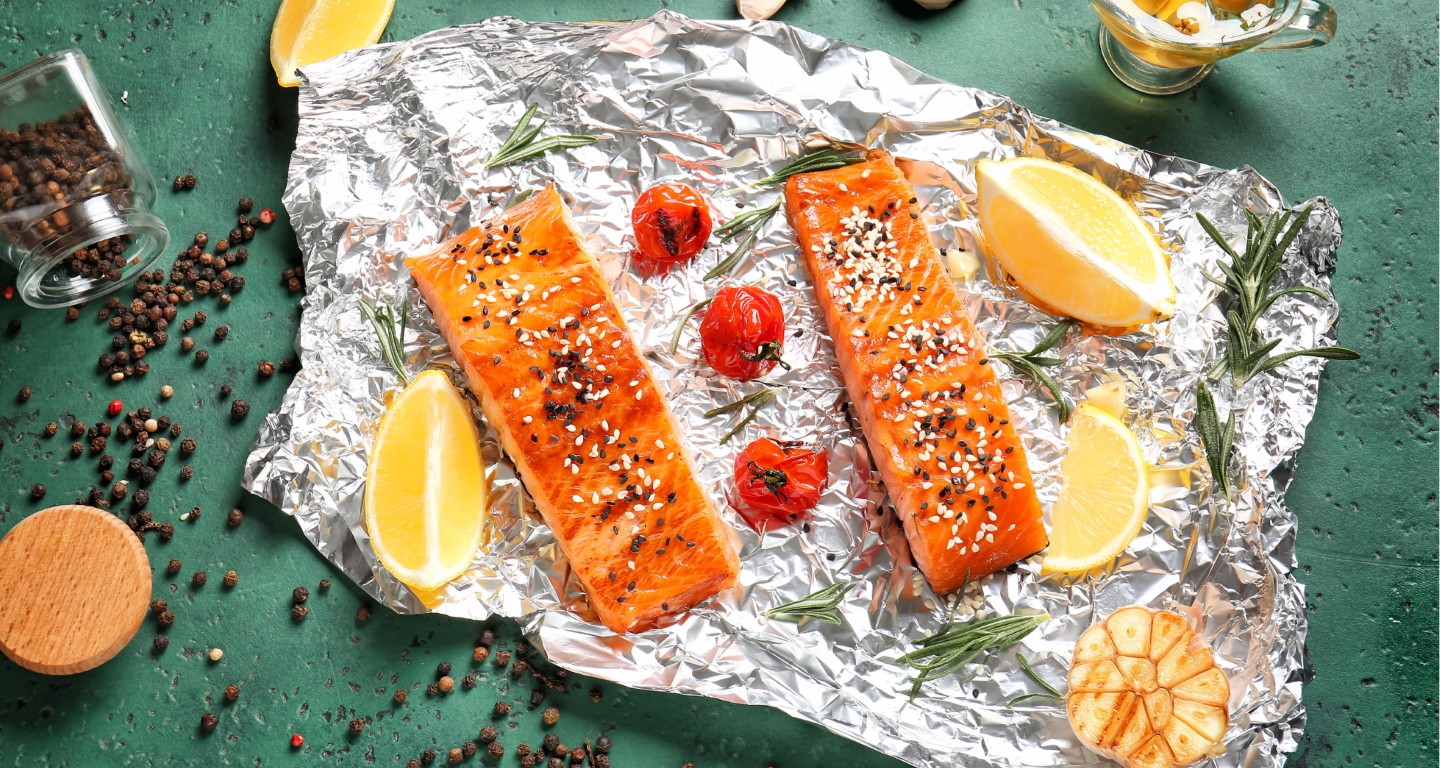
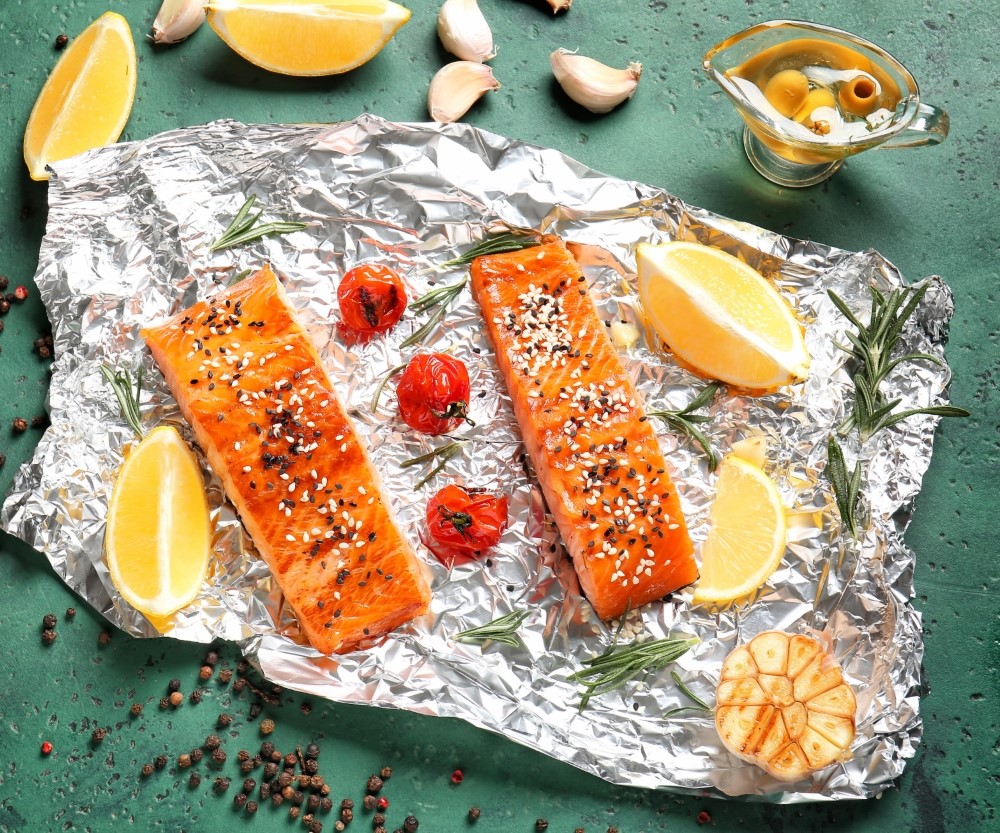
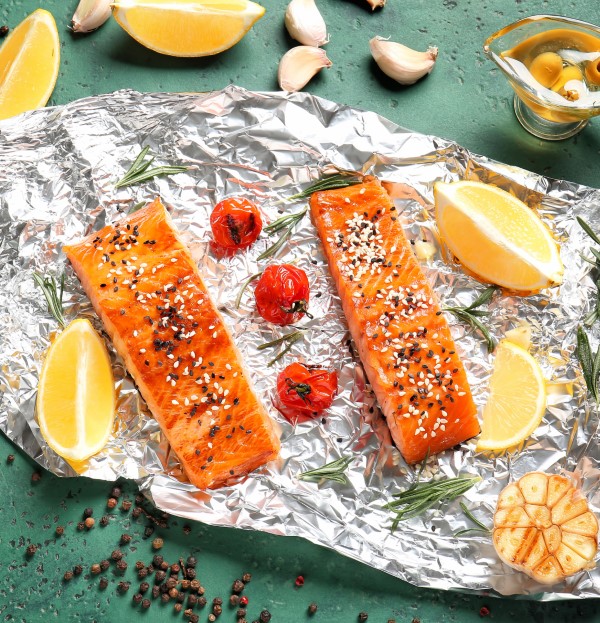
There are more than 350 different types of fish and shellfish sold in the U.S.1 From salmon to shrimp to tuna and more, seafood is a high-quality source of protein, healthy fats, and nutrients.2
Nearly half of Americans eat fish rarely or not at all.3 However, the Dietary Guidelines for Americans recommend that most adults have 8 ounces of some type of fish every week because of its health benefits.4 Consider using the USDA’s MyPlate visual tool, which incorporates seafood into the protein food groups. Health organizations like the American Heart Association support this advice, too, by recommending eating seafood twice a week as part of a healthy eating pattern.5
Not only do we stock fresh seafood in our stores, but the Sincerely Health features in our digital app make it easy and rewarding to incorporate more seafood into your diet. Read on for additional information on seafood, particularly salmon, including new recipes and tips on how to use Sincerely Health features to gain nutrition insights and earn rewards for reaching your wellness goals.
3 health benefits of seafood, including salmon
There are numerous health benefits of eating seafood, including salmon.6 Here are 3 ways seafood aids your body:
#1: Helps protect your heart with omega-3 fatty acids
Of all the proteins, seafood provides the highest amount of omega-3 fatty acids.7 Omega-3s are a healthy type of polyunsaturated fat. In other words, this is a fat you can—and should—eat.
Omega-3s are also an essential nutrient, which means your body needs it to perform a host of functions. However, your body can’t make its own omega-3s. It can only get this nutrient from foods. Seafood, especially fatty fish like salmon, mackerel, rainbow trout, and canned light tuna, are excellent sources.8
One of the most impressive benefits of omega-3s is its ability to fight heart disease.9 It does this by:
- Helping your heart to beat in a steady rhythm
- Lowering blood pressure, heart rate, and cholesterol10
- Reducing inflammation that damages blood vessels
#2: Provides essential nutrients
Depending on the type, seafood can be a good source of vitamins and minerals.11 Consider these options for:
- Bone-building calcium: Canned sardines, salmon, and shrimp12
- Blood- and brain-boosting vitamin B12: Clams, oysters, mackerel, and salmon13
- Blood-fortifying iron: Mussels, octopus, and canned oysters14
- Bone-building vitamin D: Salmon, mackerel, and trout15
- Inflammation-fighting selenium: Tilapia, tuna, and grouper16
- Vison-protecting vitamin A: Tuna, clams, salmon, and oysters17
#3: High in protein
Salmon, and other fish and shellfish, are excellent sources of protein.18 Your body needs protein for energy, tissue and bone repair, and hormone production.19 Depending on the seafood type, a 4-ounce serving of fish or shellfish can provide 30% to 40% of the average recommended daily amount of protein.20 Plus, your body breaks down and uses protein in seafood more easily than red meat or poultry because there’s less connective tissue.21
Seafood is:
- A complete protein, providing the body with all 9 essential amino acids that it needs but can’t make itself. 22
- Low in calories—a 4-ounce serving of cod, flounder, or sole has about 100 calories.23
- Higher-fat fish like salmon, mackerel, and herring have about 200 calories per serving.24
- Lower in saturated fat than other animal-based protein sources.25
3 ways Sincerely Health can help inspire and reward you for eating more seafood:
Our digital app offers shoppers easy to use tools to better understand your regular nutritional needs and earn rewards for reaching your wellness goals. You can add goals and track your progress in the Sincerely Health platform and get helpful tips on how to eat more seafood. Here are 3 fun ideas to get started:
- Set a 7-day goal to get two servings of seafood this week and earn 300 healthy points you can use towards grocery coupons.
- Set a 21-day goal to eat 4 servings of salmon within a 21-day window to earn 300 healthy points you can use towards grocery coupons.
- Start a nutrition goal to eat more protein in Nutrition Shopping to easily discover foods and recipes that include protein-rich seafood options. Earn up to 100 healthy points each time you order groceries with Nutrition Shopping products.
How safe is seafood to eat?
You may have heard that certain types of seafood have environmental contaminants like mercury that could damage a person’s nervous system. While that’s true, it’s not the complete story: Most seafood Americans buy and consume is low in mercury.26 Numerous studies show that the health benefits of eating seafood in the recommended amounts greatly outweigh contaminant risks.27
Mercury in fish poses the biggest risk to the brain development of unborn babies and young children.28 While it is important to limit mercury in the diets of those who are pregnant or breastfeeding and children, many types of fish are both nutritious and lower in mercury, according to the FDA. Good options include salmon, pollock, shrimp, and shellfish.29 Check out the FDA’s advice here about eating fish for those who are pregnant or breastfeeding, and children ages 1-11 years.
Try Sincerely Health to discover new insights and seafood recipes
Seafood is high in protein, low in calories, high in heart-protecting Omega-3 fatty acids, and a good source of vitamins and minerals. Try out Sincerely Health features in your banner app, where you can discover seafood recipes and shop for recipe ingredients. Signing up is simple, plus you’ll get $10 off groceries just for getting started.* Consider experimenting with new recipes and eating fish weekly, which health organizations recommend because of the health benefits.
*Sincerely Health offers: See rewards account for offer dates and minimum purchase requirements. Only valid on groceries. Excludes alcohol, tobacco, fluid dairy, stamps, gift cards, tickets, concession passes, taxes, service and regulatory fees & tips. Limit 1 per Health Account. Cannot be combined with any other offer. Not valid for orders placed with third party delivery providers like Instacart, DoorDash, UberEats. No monetary value. We reserve the right to correct or modify/cancel the offer.
Download your banner app on the App Store today
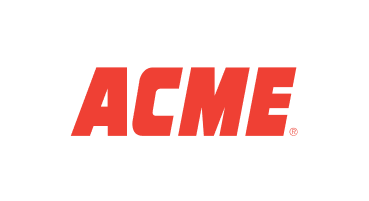

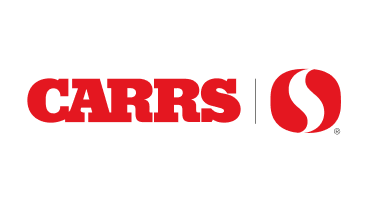

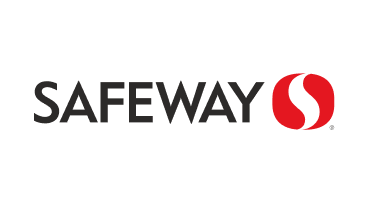





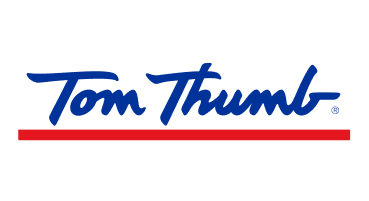

Sources:
[1] Seafood Health Facts. Seafood for Health: Information for Healthcare Providers. Last reviewed 2021. https://bpb-us-w2.wpmucdn.com/sites.udel.edu/dist/a/11796/files/2021/11/final-seafood-health-reference-guide-for-professionals.pdf
[2] Seafood Health Facts. Seafood for Health: Information for Healthcare Providers. Last reviewed 2021. https://bpb-us-w2.wpmucdn.com/sites.udel.edu/dist/a/11796/files/2021/11/final-seafood-health-reference-guide-for-professionals.pdf
[3] Advanced in Food and Nutrition Research. Seafood and Health: What You Need to Know. Last reviewed 2021. https://www.sciencedirect.com/science/article/abs/pii/S1043452621000498
[4] Mayo Clinic. Omega-3 in Fish: How Eating Fish Helps Your Heart. Last reviewed August 25, 2023. https://www.mayoclinic.org/diseases-conditions/heart-disease/in-depth/omega-3/art-20045614
[5] American Heart Association. Fish and Omega-3 Fatty Acids. Last reviewed November 1, 2021. https://www.heart.org/en/healthy-living/healthy-eating/eat-smart/fats/fish-and-omega-3-fatty-acids
[6] Mayo Clinic. Omega-3 in Fish: How Eating Fish Helps Your Heart. Last reviewed August 25, 2023. https://www.mayoclinic.org/diseases-conditions/heart-disease/in-depth/omega-3/art-20045614
[7] Cleveland Clinic. Omega-3 Fatty Acids. Last reviewed November 17, 2022. https://my.clevelandclinic.org/health/articles/17290-omega-3-fatty-acids
[8] Cleveland Clinic. Omega-3 Fatty Acids. Last reviewed November 17, 2022. https://my.clevelandclinic.org/health/articles/17290-omega-3-fatty-acids
[9] Harvard T.H. Chan School of Public Health. Omega-3 Fatty Acids: An Essential Combination. Last reviewed 2020. https://www.hsph.harvard.edu/nutritionsource/what-should-you-eat/fats-and-cholesterol/types-of-fat/omega-3-fats/; American Heart Association. Fish and Omega-3 Fatty Acids. Last reviewed November 1, 2021. https://www.heart.org/en/healthy-living/healthy-eating/eat-smart/fats/fish-and-omega-3-fatty-acids
[10] Mayo Clinic. Omega-3 in Fish: How Eating Fish Helps Your Heart. Last reviewed August 25, 2023. https://www.mayoclinic.org/diseases-conditions/heart-disease/in-depth/omega-3/art-20045614
[11] Seafood Health Facts. Seafood for Health: Information for Healthcare Providers. Last reviewed 2021. https://bpb-us-w2.wpmucdn.com/sites.udel.edu/dist/a/11796/files/2021/11/final-seafood-health-reference-guide-for-professionals.pdf
[12] My Food Data. Nutrient Ranking Tool. https://tools.myfooddata.com/nutrient-ranking-tool/calcium/fish/highest/household/common/no
[13] My Food Data. Nutrient Ranking Tool. https://tools.myfooddata.com/nutrient-ranking-tool/vitamin-b12/fish/highest; Harvard T.H. Chan School of Public Health. Vitamin B12. Last reviewed March 2023. https://www.hsph.harvard.edu/nutritionsource/vitamin-b12/
[14] My Food Data. Nutrient Ranking Tool. https://tools.myfooddata.com/nutrient-ranking-tool/iron/fish/highest/household/common/no
[15] The Journal of Steroid Biochemistry and Molecular Biology. An Evaluation of the Vitamin D3 Content in Fish: Is the Vitamin D Content Adequate to Satisfy the Dietary Requirement for Vitamin D? Last reviewed January 30, 2007. https://www.ncbi.nlm.nih.gov/pmc/articles/PMC2698592/
[16] My Food Data. Nutrient Ranking Tool. https://tools.myfooddata.com/nutrient-ranking-tool/selenium/fish/highest/household/common/no; Harvard T.H. Chan School of Public Health. Selenium. Last reviewed March 2023. https://www.hsph.harvard.edu/nutritionsource/selenium/
[17] My Food Data. Nutrient Ranking Tool. https://tools.myfooddata.com/nutrient-ranking-tool/vitamin-a-rae/fish/highest; Harvard T.H. Chan School of Public Health. Vitamin A. Last reviewed March 2023.
[18] Seafood Health Facts. Seafood for Health: Information for Healthcare Providers. Last reviewed 2021. https://bpb-us-w2.wpmucdn.com/sites.udel.edu/dist/a/11796/files/2021/11/final-seafood-health-reference-guide-for-professionals.pdf
[19] Harvard T.H. Chan School of Public Health. Protein. https://www.hsph.harvard.edu/nutritionsource/what-should-you-eat/protein/
[20] Seafood Health Facts. Seafood for Health: Information for Healthcare Providers. Last reviewed 2021. https://bpb-us-w2.wpmucdn.com/sites.udel.edu/dist/a/11796/files/2021/11/final-seafood-health-reference-guide-for-professionals.pdf
[21] Seafood Health Facts. Seafood for Health: Information for Healthcare Providers. Last reviewed 2021. https://bpb-us-w2.wpmucdn.com/sites.udel.edu/dist/a/11796/files/2021/11/final-seafood-health-reference-guide-for-professionals.pdf
[22] Cleveland Clinic. Amino Acids. Last reviewed December 22, 2021. https://my.clevelandclinic.org/health/articles/22243-amino-acids
[23] Seafood Health Facts. Seafood for Health: Information for Healthcare Providers. Last reviewed 2021. https://bpb-us-w2.wpmucdn.com/sites.udel.edu/dist/a/11796/files/2021/11/final-seafood-health-reference-guide-for-professionals.pdf
[24] Seafood Health Facts. Seafood for Health: Information for Healthcare Providers. Last reviewed 2021. https://bpb-us-w2.wpmucdn.com/sites.udel.edu/dist/a/11796/files/2021/11/final-seafood-health-reference-guide-for-professionals.pdf
[25] Picking Healthy Proteins. American Heart Association. Last reviewed November 2021. https://www.heart.org/en/healthy-living/healthy-eating/eat-smart/nutrition-basics/meat-poultry-and-fish-picking-healthy-proteins
[26] Seafood Health Facts. Seafood for Health: Information for Healthcare Providers. Last reviewed 2021. https://bpb-us-w2.wpmucdn.com/sites.udel.edu/dist/a/11796/files/2021/11/final-seafood-health-reference-guide-for-professionals.pdf
[27] Seafood Health Facts. Seafood for Health: Information for Healthcare Providers. Last reviewed 2021. https://bpb-us-w2.wpmucdn.com/sites.udel.edu/dist/a/11796/files/2021/11/final-seafood-health-reference-guide-for-professionals.pdf
[28] EPA. EPA-FDA Advice About Eating Shellfish. Last reviewed October 2021. https://www.epa.gov/choose-fish-and-shellfish-wisely/epa-fda-advice-about-eating-fish-and-shellfish
[29] Seafood Health Facts. Seafood for Health: Information for Healthcare Providers. Last reviewed 2021. https://bpb-us-w2.wpmucdn.com/sites.udel.edu/dist/a/11796/files/2021/11/final-seafood-health-reference-guide-for-professionals.pdf

















